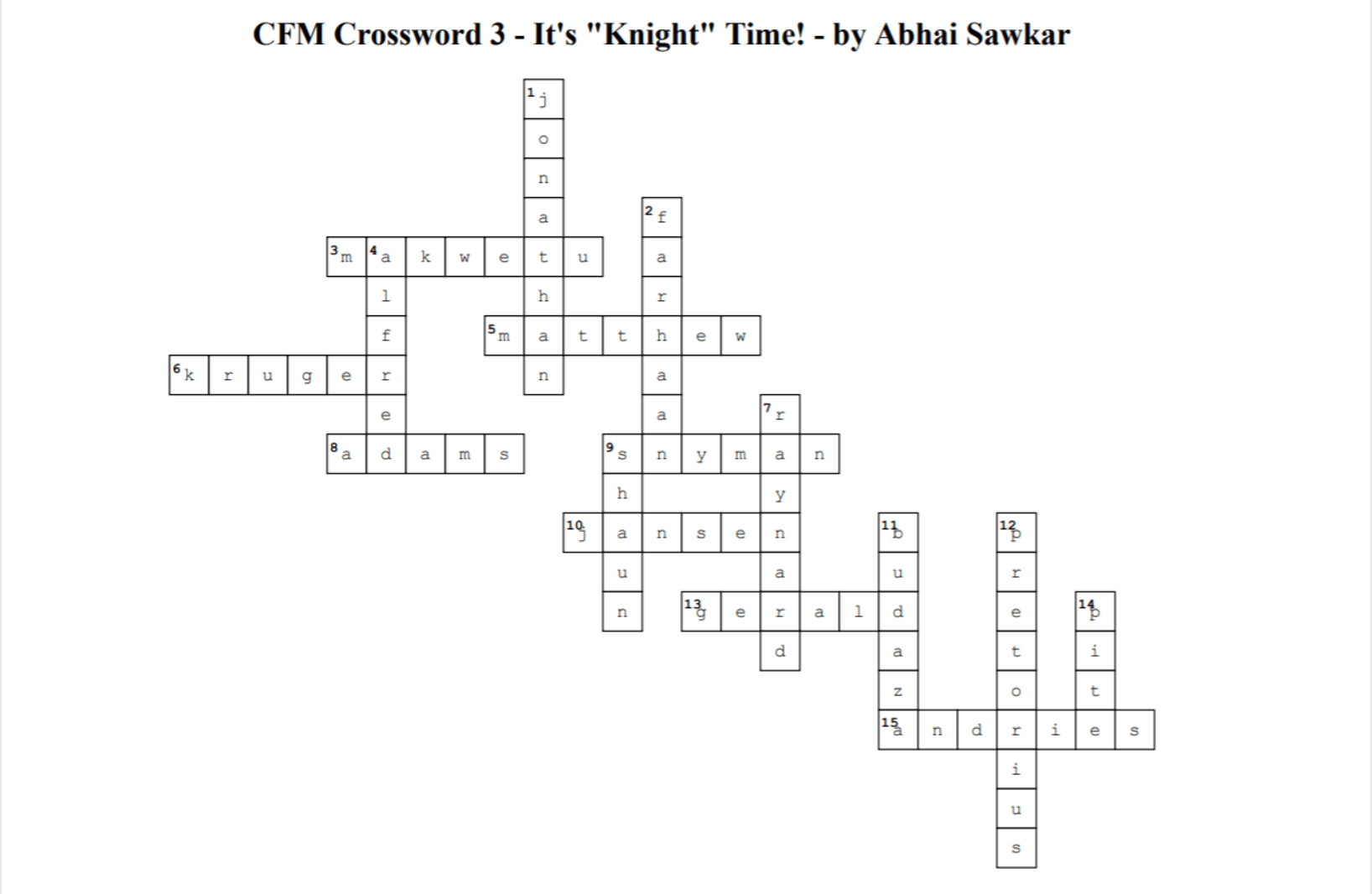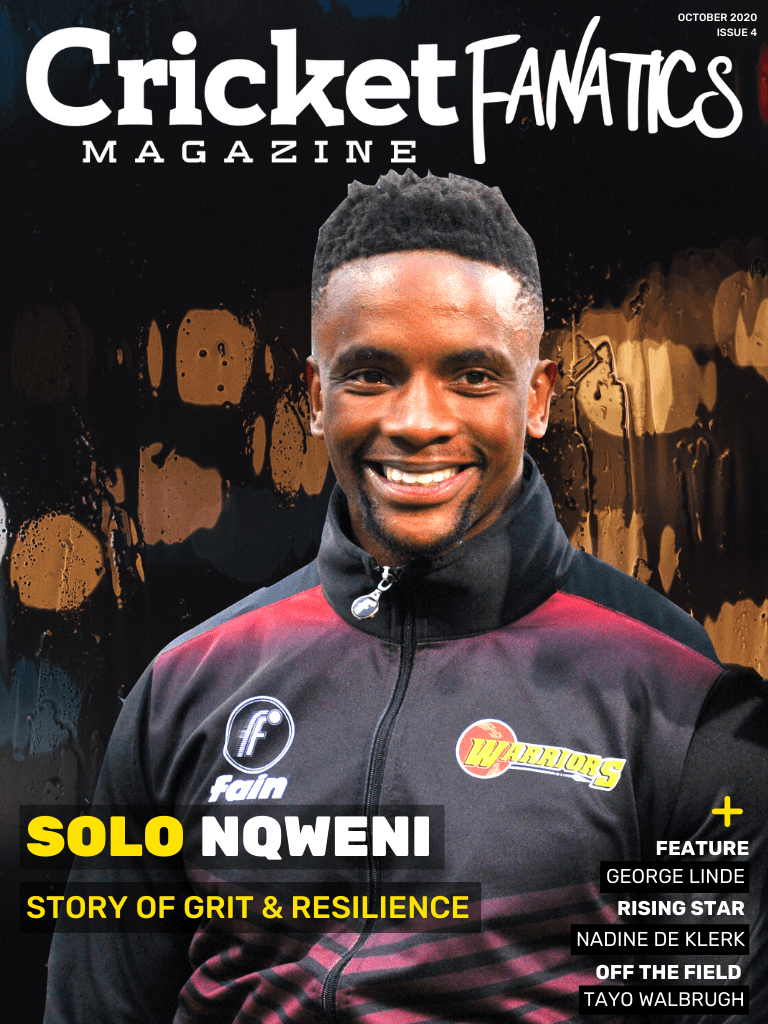
Table of Contents
EDITOR'S NOTE
How We Can Help You
Khalid Mohidin
Founder and Editor - Cricket Fanatics Magazine
I want to take this opportunity to tell you about how we at Cricket Fanatics Magazine can help you.
I started this journey about a year and a half ago to make a difference in the way cricket is talked about and reported on by putting my unique twist on the content that we will provide.
We worked long and hard to build a multi-platform digital publication that provides cricket fans with exclusive content, opinions and interviews centred around telling the Untold Stories in South African Cricket.
We tried our best to interview as many players that we could, to give fans a raw and real experience of what their cricket stars are like on and off the field.
The aim has always been to entertain you and inform you, by bringing Cricketers closer to the fans and vice versa.
We also want to help young cricketers grow their game and their knowledge of the game by interviewing players, coaches and legends in the sport and allowing them to freely tell their stories.
We also give fans the freedom to have their say and share their opinions too.
But what I realised while doing all of this is that it would be selfish of me to keep this platform to myself, for only my benefit, especially in this difficult times that we find ourselves in.
The main mission when I started this company was to help others in the best way possible.
So, I had a long heated discussion with my systems manager, who doesn’t like to be in front of the camera and prefers to operate behind the scenes, to come up with a way that we at Cricket Fanatics magazine can help you.
Whether you are a Business Owner in Cricket, A Cricket Coach, or a cricket fan that owns a small business, we want to make our platform available to you for your benefit.
We will also be opening up all of our platforms – whether it be our website, YouTube channel or this Monthly Magazine, to help fans share their views and give aspiring journalists exposure so that they can grow their careers in this field.
All you need to do is click on the button below to have a no-obligation free strategy session with Faizel, our Systems Manager.
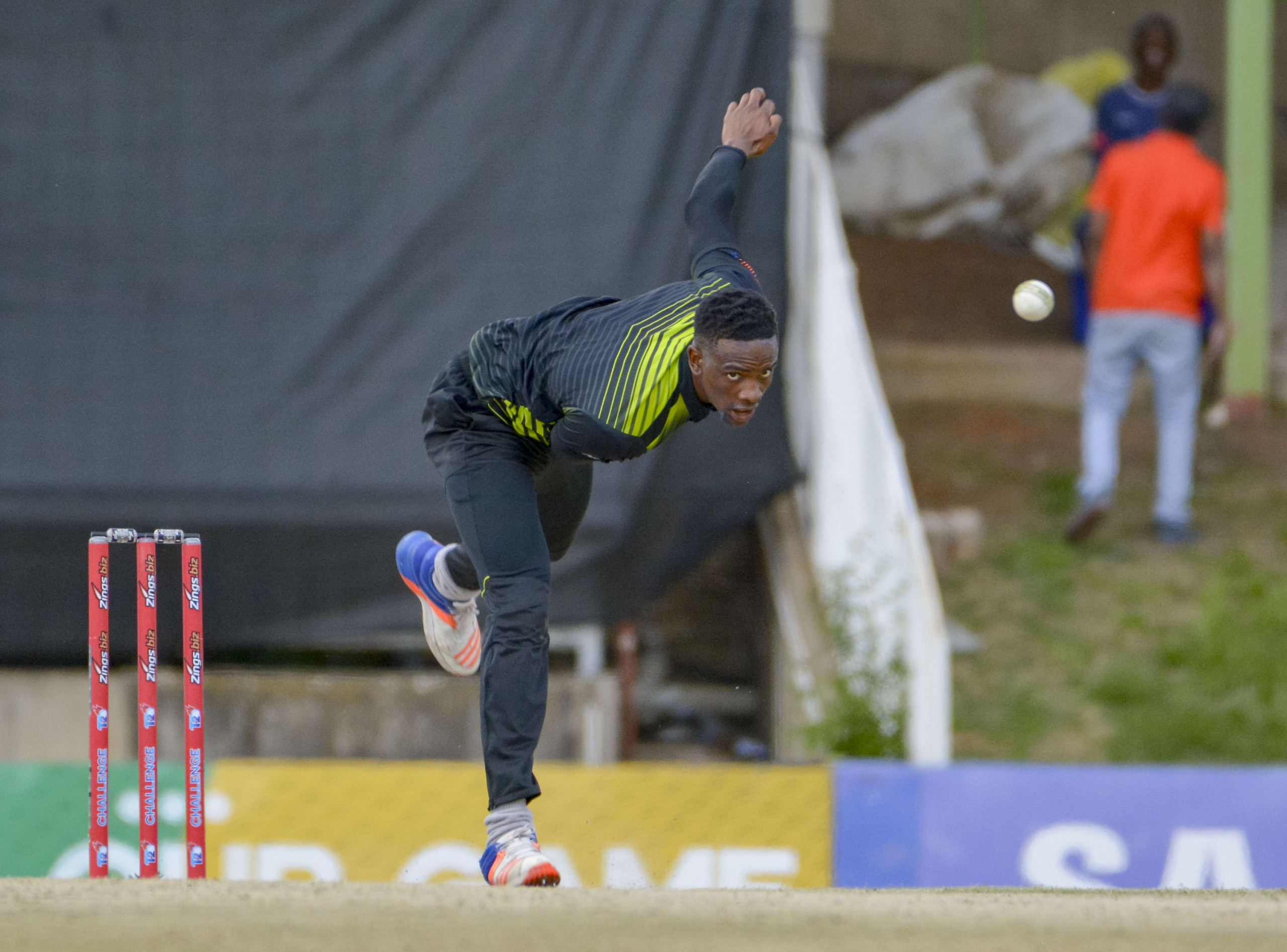
Finding His Feet: A Story of Grit and
RESILIENCe
By Chris Chiwanza
Now and then we come across people who change our lives. People whom you do not know, people whose paths might never meet with yours, but have such a profound effect on your life.
For me, one of those people was Solomzi Nicholas Nqweni. From the day I started reading the story of his battle with GBS, I was inspired. So, it was no surprise that I put my hand up when Khalid asked if anyone was willing to do a feature on Solo.
The first thing that struck me about Solo Nqweni was his patience. From the day he landed in South Africa in mid-January, people have been eager to have him tell his story through their various outlets from podcasts to print media.
As a result, he has averaged at least one interview a week, something that can be mentally draining.
But, when I got in touch, his voice and tone in phone conversations and text messages betrayed no impatience or weariness.
In fact, on the first morning of our first call, it was Solo who reached out to me to ask if I was still available for the chat. From that day, he patiently attended to all messages I sent in connection with this article.
Patience is just one part of Solo's character, just one aspect of his personality. Just like how his battle against GBS is a part of his life and not a definition of who he is.
Guillain-Barré Syndrome or GBS is a very rare and serious condition that affects the nerves. The rare illness left him unable to walk, talk, eat or breathe unaided.
There is more to Solo Nicholas Nqweni. Much more than the bits we see every now and then.

In August 2012 Solo Nqweni was "unveiled" to the world. The young tearaway fast bowler had impressed at Eastern Province and earned himself a call-up to the SA Under-19 squad that competed in the World Cup held in Australia.
His tournament figures, an economy of 3.35 and three wickets from three matches, were an indication of a good prospect for the future.
Immediately after the tournament, Solo, Shaylen Pillay, Prenelan Subrayen and Jan Frylinck were asked to fly from Brisbane to Canberra while the rest of the team flew back home.
The reason being for that group visit to the Australian Institute of Sport was to undergo tests related to their bowling actions.
The results of the test, which only came out in January 2013, were a major blow. Solo and Prenelan Subrayen, the duo who had now been turning out for their respective franchises, were informed that they had failed the tests.
Their bowling had been judged to be inconsistent and they had to rehabilitate their action. This was a big blow to the hope, the dream, that many held, of Solo joining the ranks of premier fast bowlers in the country.
The news could not have come at a worse time. Solo received the feedback as he was preparing for Cubs Week, the annual Under-19 interprovincial tournament and another stint of national duty in an Under-19 series against England in Cape Town.
The world of a young man who had so much potential was shattered. Suddenly, his future looked uncertain. No one had prepared him on how to deal with situations like this.
"I really wasn't sure how to move forward," he said. "My identity had been modelled around cricket. I did not have a fallback plan, I had not prepared for anything like it."
It was looking as if the journey that had started, because his grandfather had been a few minutes late to pick him from school, was coming to an end.
While waiting for his grandfather's arrival, Solo sat by, watching a few friends playing Baker's Mini Cricket.
It happened that they needed an extra player, and they invited the then nine-year-old Solo to join them to make the numbers. And from that day, he was in love.
"From that day I played street cricket with my friends, played cricket at school. But I really focused on sports like tennis and hockey, not so much on cricket. I didn't put in extra work on skills, gym or anything."
However, all that changed when he was selected for a national camp for Under-17s. The fact that others saw his potential made him realise that he could do more with cricket.
It was then at that point that he decided that his future lay in being a professional cricketer. From that point onwards, Solo put everything into achieving that goal. His identity was of him as a cricketer.
Thus, the news from the Australian Institute of Sport was a major blow. Solo's career depended on him being a strike bowler, that is what had gotten him this far.
The other difficulty that came with the news was the confusion. People around him who misunderstood the reports of his suspension and the required rehabilitation.
Many thought that it had more to do with drugs and he had to go to a drug rehab centre.
"It was confusing for many people outside sport because many of them associate rehab with drug addiction," Solo recalled.
"As a result, each time someone asked I had to explain that in sport there are many types of rehabilitation that a player might need that have nothing to do with drugs.
"For example, there's the rehabilitation from injury and rehabilitation for bowling action."
More often than not, Solo found himself having to explain the mechanics of bowling action and the degrees a bowler needed to maintain through all his variations.
Another thing he had to contend with was questions by curious people who wanted to know why he was not playing.
These conversations were coming up at a time when all he wanted was to put all this behind him and move forward.
But he did put all that behind him and went back to work.
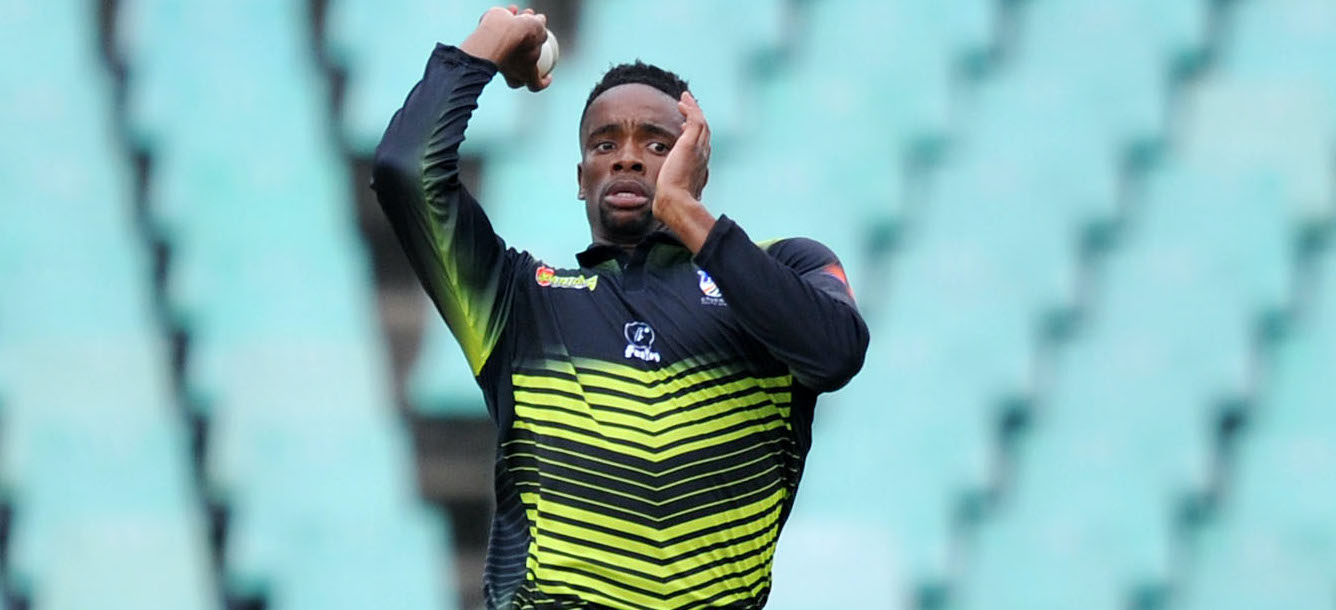
Going back to the drawing board was not easy, but he did it. Solo spent the year 2013 working on his bowling, learning a new action.
He spent hours working with Vincent Barnes, Adrian Birrell and Piet Botha, relearning his craft.
However, after the hard work over the 12 months, his return to the team and competitive cricket did not work out as he would have liked.
After a year, of rehabilitation, Solo had a new action, but he just could not generate the same pace as before.
As a result, he had to adopt a new role in the team, relinquish his new ball responsibilities to others and become a backup bowler. He struggled with readjusting, and as a result, he also lost confidence.
His teammates also struggled with the new Solo, he just wasn't the same. They lost faith in him and the lack of trust in his abilities was palpable on the field. There was always hesitation in giving him the ball.
Again, Solo found himself in a world of uncertainty. He was now at a crossroads, and he needed to find out whether his future still was in cricket or not.
His enjoyment of cricket was waning, and on some days he felt like he was falling out of love with the game. He was no longer motivated to play, he stopped looking forward to practice and matches.
It was during this period that Eastern Province offered him a new contract and, still unmotivated, he turned it down. His mind was made up, he was putting cricket in the rearview mirror and focusing on his studies.
Never content with just being another player, Solo's goal was to have a huge impact on matches and tournaments.
And nothing shows that as much as the awards that Solo won because of outstanding performance on the field. And this he proved emphatically between 2016 and 2018 as he fought for a place in the Warriors squad.
In 2016 he was a key player in the squad that won the Africa T20 Cup. In 2017 he was one of the two nominations for the Provincial T20 Player of the Year.
In 2018, after helping Eastern Province to the league title, Solo walked away with the Players' Player of the Season award and another award for courage and determination.
"I gave Solo the nickname, Soldier, because of the way he was willing to fight against all odds to get into my team.
"He just didn't work on his bowling, but also his batting. He reinvented himself in a very short space of time."
These were the words from Malibongwe Maketa who was Solo's head coach at Warriors.
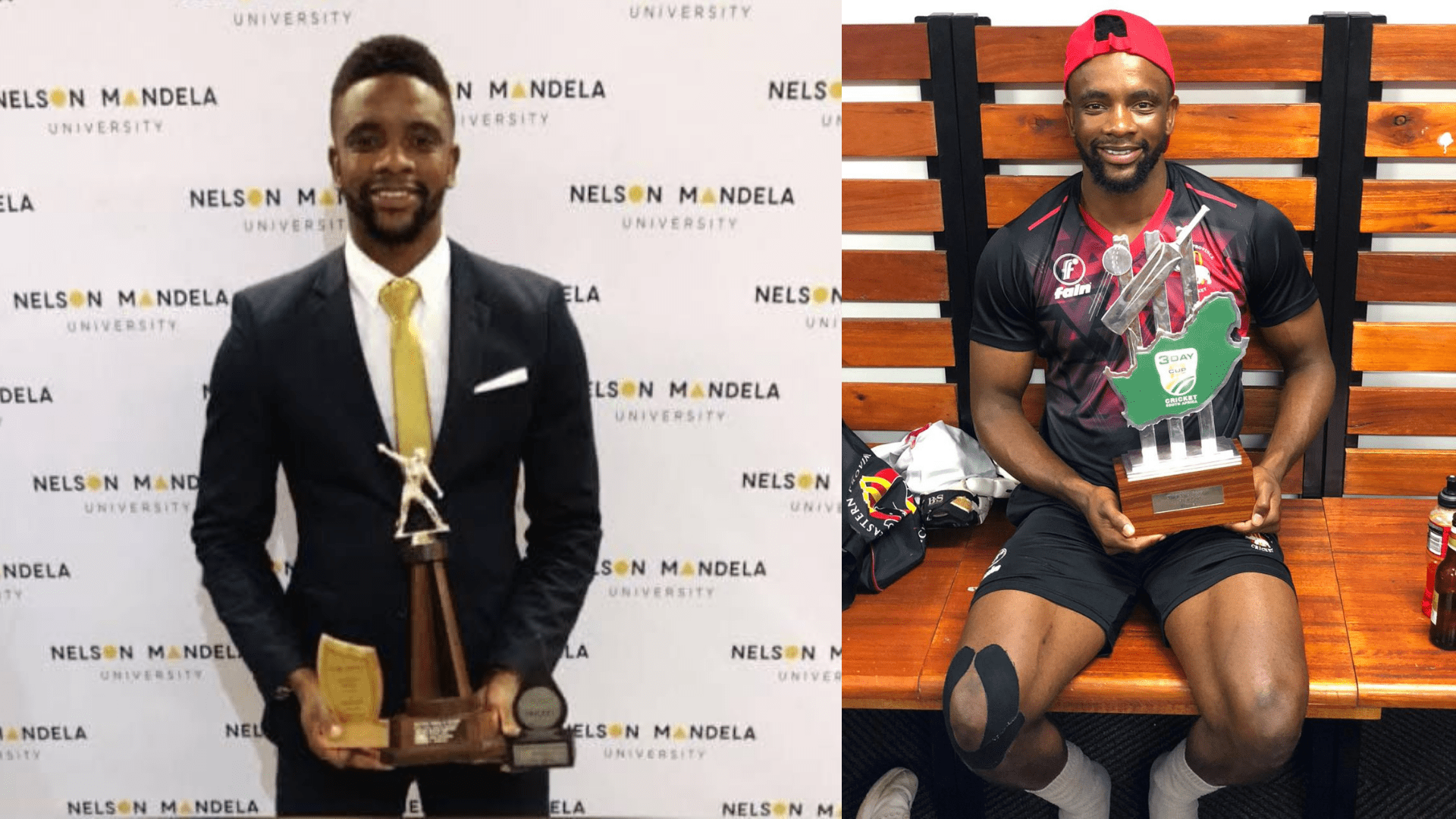
His performances earned him the call up to the Warriors squad, and after stellar performances there, he caught the eye of Aberdeenshire Cricket Club, whom he joined as an overseas player.
But his stay with the Scottish club was cut short in 2019 when he fell ill with GBS, and from which he is still recovering.
What does the future hold for Solo Nqweni?
The doctors told him that it will take him 18 months to regain total control of his body and independence. Which will be around January 2021.
But for the moment, with the patience of the Buddha as he waits at the gates of heaven until all others have entered before him, Solo is patiently waiting for his time to do what he loves best. He knows that his time will come.
"I have unfinished business on the cricket field," Solo said on Twitter at one point.
As soon as he regains mobility, Solo plans on working on his fitness, bowling and batting.
"I will dedicate the year to working on my fitness and skills. I plan to be playing competitive cricket in early 2022."
And if there is anything that I have learnt from Solo in all of my communication with him, with coaches and reading about him online, he is on track for a comeback.
He has the focus, passion and dedication to come back from any setback he might face.
"Solo is very demanding of himself. He is very driven and sometimes can be too hard on himself," says Malibongwe Maketa.
Watching other players getting opportunities while he was on a hospital bed only served to inspire him that he can earn those same opportunities too when he comes back.
And it's not wishful thinking, he has risen from the ashes once, and he can do it again.
You can bet on it.
How We Can Help You
Cricket Fanatics Magazine has a Multi-Platform Digital Publishing Infrastructure.
We are now offering to help you with our infrastructure, systems and processes.
We've done the investment, so that you don't have to.
Click on the Button Below to see all the ways we can help you.
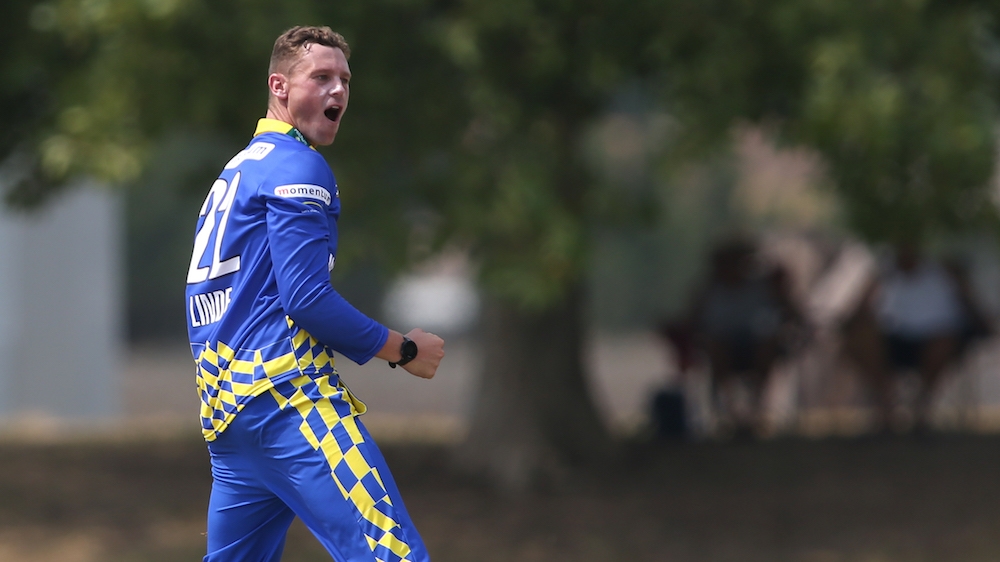
George Linde, More than just A White-Ball Cricketer
By Khalid Mohidin
George Linde has always been on a mission to prove to South African selectors that he is a three-format player, his efforts were rewarded when he picked up Cricket South Africa’s 4-Day Cricketer of the Year.
The first time I saw George play, it was his batting that stood out to me. I was sitting at a Cobras practice session and watched as he slammed straight drives with power and precision to cries of “Amazing Fella; 'Gun' shot Georgie” from Cobras assistant coach Faiek Davids.
He followed this up with some quality spin bowling, testing the players and not letting many fly past him. This was in 2017, George was 25 and still trying to prove to national selectors that he had the talent to succeed.
I’ve followed his career quite closely from there on out and saw him become an integral part of the Cobras squad, in all three formats. But it still seemed like all the talk was around his white-ball game.
It might have come as a shock to many that it was in red-ball cricket that he would represent his country for the first time and that his performances in red-ball cricket for the Cobras was responsible for his first CSA Award in his career.
“Winning the 4-Day Player of the Season was a massive honour for me because I didn’t play a lot of 4-Day cricket, so the season before I had to look at myself, show South Africa, and also the national selectors, that I can play red-ball cricket as well.
"That I’m not just a white-ball specialist,” Linde said exclusively to Cricket Fanatics Magazine.
“So that was my main goal last season to show everyone that I can play red-ball cricket and I felt that I did that. I hope that the selectors now see that I can play all formats, not just maybe one or two formats.
“That’s always been my goal, to be able to put my name in the hat for all three formats for the Proteas.
“I also had to prove other people wrong because I’ve been sitting on the sidelines for four years without gaining an opportunity and when that opportunity came, I couldn’t let that go past me. I couldn’t give that opportunity to someone else. I had to take it with both hands.”
He did exactly that. In his debut Test match in India, he took 4 wickets. He then came back to domestic cricket and hit his maiden Franchise century for the Cobras, against the Warriors at Newlands and then hit another (148 not out) not too long after against the Titans at the same ground.
He also finished the 4-Day competition with 30 wickets in 6 matches, a remarkable season for the 28-year-old.
The performance in this competition also proved his ability as an all-rounder.
“That’s also my advice to others. Never give up on something you want. Although one of my special performances was probably my first 10-wicket haul in Cobras colours, my most favourite is when I scored my first hundred for the Cobras at Newlands, probably my favourite ground in the world and the country,” Linde added.
“That was my most special moment because I had to prove myself as an all-rounder as well, because I know I can change the game with the bat as well. And I can add a lot of value with the ball.
“I feel like I can play in that number seven, or eight for South Africa. I believe I can bat even higher than seven or eight.
"I want to show the selectors once again, that I can play all formats and put my hand up for the upcoming series’.”
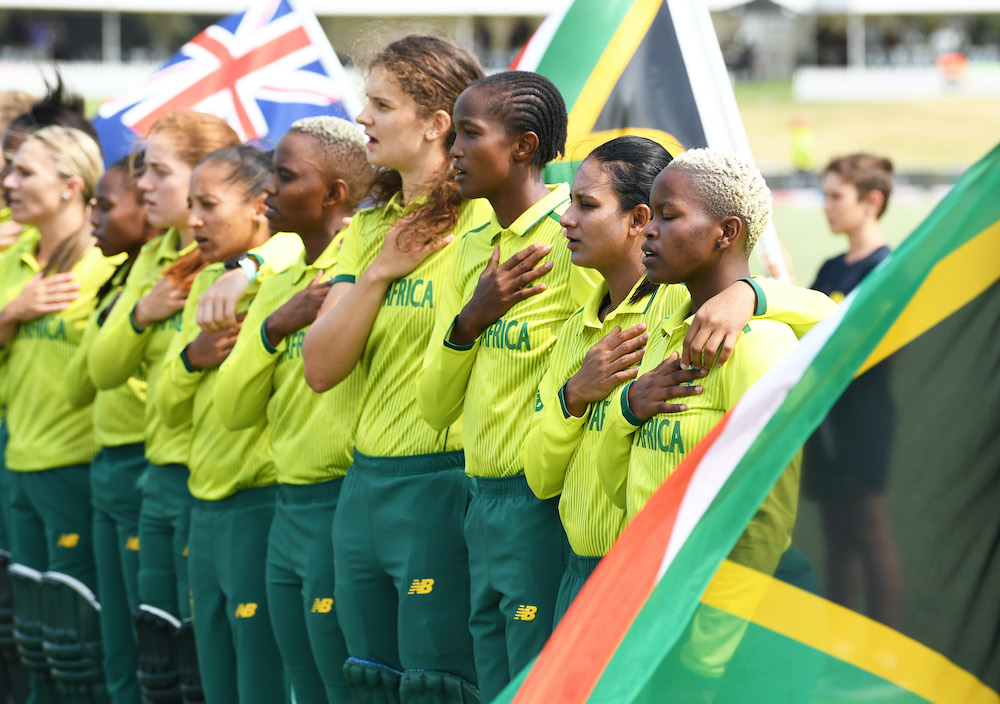
Women bucking the trend in SA cricket
By Marc Jacobson
Women’s cricket – and perhaps all women’s sports for that matter – have taken the back burner in terms of exposure and professionalism, but in line with perseverance, it is because of this that they need to be given a lot more credit for what they do.
Unlike their male counterparts, women have to go that extra mile just to get recognized while having to play down that obscure perception of them not being taken seriously in the sport.
It remains to be a balancing act for a female who wishes to play provincial and national cricket – to put in the hard yards of making it to the top while still having other job commitments to pay the bills. After all, cricket for them, sadly, is still amateur on the domestic scene.
Women cricketers only get paid if they play internationally, not domestically, which poses a predicament for the system.
How should a player climb the ladder and move up in the ranks if they can’t get paid while doing it?
How can a national entity build a solid foundation if that very foundation is liquid?
Sport is supposed to be built from the grassroots up, not the other way round. If the roots aren’t strong, the tree will collapse – and that is the proverbial national women’s fraternity for you.
This is why domestic women have to play with that extra ambition, vigour, determination, commitment and perseverance.
For Gabi-Lee van der Westhuizen, who grew up being a lover of cricket, she didn’t initially see any future for herself in the sport, but coupled with her strong desire of having not given up, she discovered other ways in which to contribute.
Entering the scene blindly, Van der Westhuizen managed to persevere enough to eventually become the Western Province women’s and under-19 girls’ team manager and trainer, as well as a ‘game-changer’ for aspiring girls in the sport.
“To be dead honest, I had no idea there was women’s cricket when I was younger,” said Van der Westhuizen exclusively to Cricket Fanatics Magazine.
“But I loved cricket and I watched the men play on TV and I played with the boys on the streets. I felt that [same] hurt of the 1999 World Cup.
“I was only really exposed to the culture and environment [of cricket] when I went to high school and they had a girls’ cricket team.
“I played for my school teams and I played for the Boland under-16 side before making the under-19 team as well.”
That’s where her journey and prowess as a player ended, with other commitments needing to come to the fore.
“I didn’t excel any further because I started studying and I had a really bad knee injury that required an operation. I tried to balance it and maybe play recreationally, but I was so consumed with studying and working.
“I worked a lot, which included volunteering, coaching, umpiring and anything that I could get my hands on in the sports science field. There was no time to play cricket.”
Under tricky circumstances and against many challenges, Van der Westhuizen, who matriculated from Hottentots-Holland High School in 2008, made her breakthrough as a result of her sheer passion for cricket.
“I had the passion of giving back to sport,” she said. “To give back to the kids I coached and to the institution itself. That’s how the journey started in this regard.
“I would still love to play cricket again but I’m just too busy to do so. My studies have taken the biggest priority over the last few years so there’s just no time to play in between managing, teaching and everything else that I do.”
Van der Westhuizen’s true potential may not have been realised, largely as a result of the lack of opportunities plaguing women’s cricket locally.
She could have developed and evolved to become one of the best cricketers in the world, but that promise was pinned when she was instead forced to prioritise studies and work.
Meanwhile, a male cricketer would have generally been afforded the opportunity to exhaust his capabilities until his last breath on his journey to ‘making it big’ as, quite obviously, the domestic game is professional. That is the main difference.
Van der Westhuizen, who obtained a degree in sports science from the University of Western Cape, said the stigma specifically facing local women cricketers was the “fear of failure”.
“That is huge in sport and particularly in women’s cricket. In their set-up the girls have to go out and perform and they’ve got this weight on their shoulders about the ‘what ifs’. What if I don’t do well?
“We know this as fear of failure and fear of failure is what inhibits performances. I’ve invested in myself to find out what skills and tools are needed to overcome this and to go into the game and perform and to showcase the skills of their mind.”
She added that mental skills was an undertaking she had committed to in her journey of specialising in sport science and psychology as it is that aspect, according to her, that underpins success and enables players to best manage pressure.
“You might be able to bat or bowl, but it’s all about what’s going on in your mind,” she said.
Van der Westhuizen unfortunately had not become a prominent star on the field, but she had certainly become influential off it, which sometimes plays a more important role behind the scenes of the many cricketing greats who enjoy the limelight.
In a male-dominated arena, this speaks volumes of her commitment, resolve and tenacity to giving back to the game.
Unlike Van der Westhuizen, Dinesha Devnarain had managed to climb to higher ranks as a player, having racked up 29 ODI caps and 22 T20 appearances for the SA women’s side.
And although she had reaped some success in that department, the 31-year-old, now retired, continues to give back to the game among the women competitors.
Devnarain earlier this year got appointed as head coach of the national women’s under-19 team and she has been primed to head the Cricket South Africa (CSA) women’s national academy system – a dual role selection.
With these invested commitments, Devnarain said she hopes to embolden women’s cricket and better place them on the map, although admitting that it has seen an upward trajectory over the last decade.
“I think a lot more can still be done,” she told Cricket Fanatics Magazine. “Hopefully, I am now in a position to change that and put things in a better place.
“It may take some time in South Africa, but I do believe we can get there. If you look at the participation in KFC Mini-Cricket you are seeing about 52 per cent boys and 48 per cent girls and that’s fantastic because that is the real developmental stage.”
She added that the number of female participants “dropped drastically” in their transition to hard-ball cricket, possibly due to parental conventions, safety concerns or feminist perceptions.
“But it doesn’t drop to the point where you aren’t getting talent coming through. The talent is still there and there is still a lot of flair,” she said, adding however that the numbers are dropping more in their transition to high school and the under-19 level.
“We almost want to mirror the men’s structure where you have the Proteas, SA A, SA U19, the national academy and the domestic leagues, which will create a bigger pool of players and more competition.
“I do believe we can get into a position to do that,” she optimistically insisted.
Dinesha Devnarain was an opportunist in the sport, having overcome judgments and other trials to even play among the boys when she was growing up in order to have sharpened her sword as a player.
Again, opportunities were waned, particularly at a grassroots level, and as a result, she said it was always paramount to have a back-up plan.
“Cricket’s been an education for me; to represent your province and country it has offered me bursaries and perks, but at one stage I didn’t know whether I’d ever get a contract so it was difficult to base my whole life on playing cricket.”
She managed to get a fully-paid bursary to pursue her studies where she achieved a BCom in finance. This had given her a sense of stability for in case cricket hadn’t transpired.
It was for this reason that Devnarain, who resides in Durban had been a custodian for KwaZulu-Natal cricket for almost 20 years and had also coached for a large majority of that period, also prioritises the mental aspect of female players.
“Something that has made me successful in coaching is that I’ve always tried to take care of the players first before the results or their performances,” she said.
“The players start playing for what they and you believe in and that’s when you get the results while building belief [in themselves].
“My job becomes pivotal by giving them guidance while telling them they can still follow their passion. Everyone wants to play cricket for their country and get paid for it, but unfortunately, not everyone can do that.
“That’s when it’s important to have a back-up plan to fall back on to. You can always stay involved in cricket if it’s your passion.”
Although passion is the driving force behind every sportsperson in their journeys to reaching the top, financial rewards also add an attractive flavour and become intertwined into the reasons why they play their respective sport.
For women and for too long, it has largely only been a passion that has pushed them forward, but personalities such as Van der Westhuizen and Devnarain have strikingly managed to make professions of their zeal for cricket in different ways, but with many challenges of proving various naysayers wrong along the way.
They can only be role-models and positive examples for yearning female cricketers moving forward and they have certainly, to a degree, bucked a trend.
Advertisement
Ezra Poole's Online Wicketkeeping Academy
Learn how to Master The Craft of Wicketkeeping Without Having to Hire a Full-Time Personal Coach.
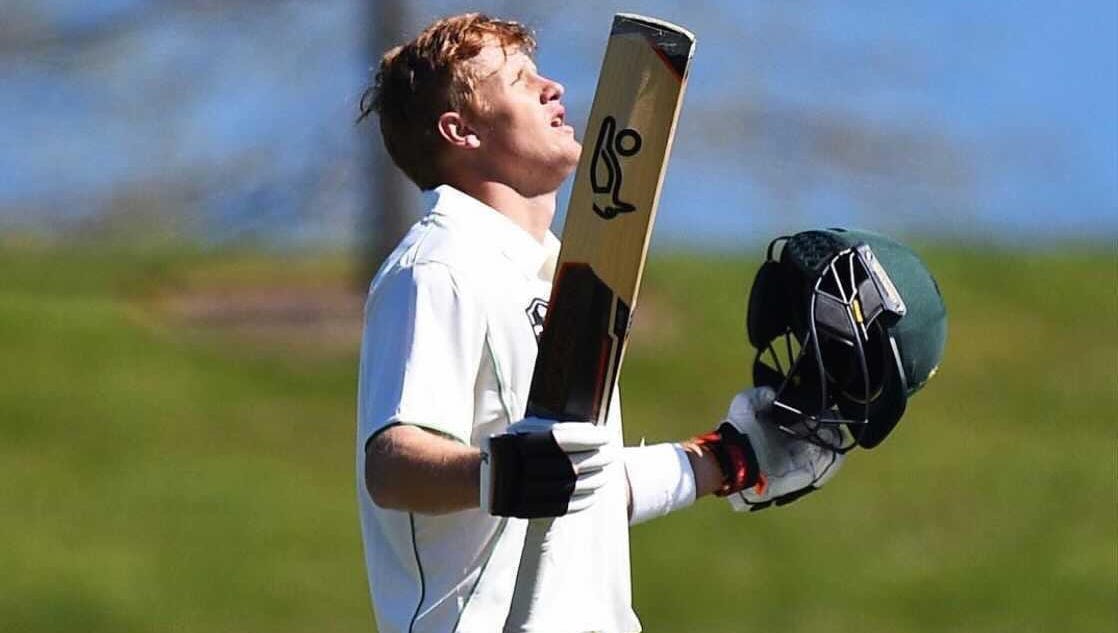
“I’m Constantly Learning my craft and Trying to Become Better” – Willem Ludick
By Abhai Sawkar
It’s 2020, and we’re in an era in which cricket has become a global sport. Several players are keen to explore their cricketing options to make further progress.
Willem Ludick’s experiences in three different parts of the world during his burgeoning career as well as his gung-ho and adventurous outlook is a testament to a strong sense of self-belief and the burning urge to forge a path in testing situations.
Born in Pretoria, Ludick honed his craft and made the most headway during his high school years.
He went to Hoerskool Waterkloof, one of the famed Afrikaans high schools in Pretoria, which has produced some eminent sports superstars such as the likes of rugby scrum-half Faf de Klerk, and cricketers Hardus Viljoen, Janneman Malan, and Pieter Malan, to name a few.
He made several friends along the way, and the will to play at the highest level further fueled his ambitions to enter the professional scene.
“The earliest memories I have of cricket is playing in the corridor with my father in my childhood home. During school, cricket was when my real passion for cricket started.
"I went to Waterkloof Hoerskool in Pretoria, which in my five years were arguably one of the best if not the best performing cricket schools in South Africa. That winning culture with friends is what made me want to do it as a profession.”

The seam-bowling allrounder’s discernible potential earned him a berth in the Under-19 World Cup squad four years ago.
While it was a tough tournament for the South Africans, it was the perfect launchpad that would open more doors for Ludick. He was mulling over where to continue his cricket soon after the event concluded.
“The World Cup gave me a taste of a professional environment and also allowed me to compete against players who are better than me, which was a great eye-opening experience.
"I left South Africa soon after the World Cup which meant I didn’t get a chance to spend a whole lot of time with any of the team but I keep in contact with Tony de Zorzi.”
While he’d just graduated from the U19 level, Ludick decided to relocate to New Zealand in late 2016. It was a decision after long deliberation, but thankfully, his family threw their full support and encouraged him.
“The move at the time was hard but I would have to say it was the right move for me. I’d be remiss if I didn’t give credit to my father who allowed me to do so and without him, I would have never found my feet in a foreign country the way I did.”
Now that he was in New Zealand, Ludick essentially had to start all over again. The fact that he was a complete newcomer made it somewhat more difficult, too. From settling into searching for cricket, it seemed like he had his work cut out.
Fortunately, he was well-prepared mentally and physically to confidently confront any challenges coming forth.
Consistent performances at club level soon brought about chances for the Central Districts A side, which was one step below playing top-level domestic cricket in New Zealand.
By the 2018-19 season, he’d finally break into the Central Districts side across all formats. He got a first-class debut against Wellington in March 2018, which was something he had earnestly and tirelessly worked toward, and the reward was well deserved.
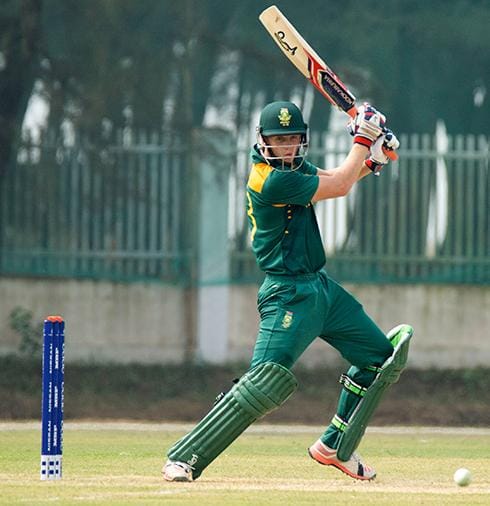
Interestingly enough, one of his Stags teammates was also one of South Africa’s U19 cricketers from the 2016 Cup – off-spinning allrounder Dean Foxcroft.
“I went to Nelson on my own expense and got a playing opportunity with the Nelson District Association team. I started well with the bat and kept scoring runs until I eventually got selected for Stags A team.
It was a process where I had to start over which in retrospect was the best thing for me It made me realise I had to score big or out in really good performances to get noticed.
In South Africa, growing up, people in my area knew who I was and in New Zealand, I had hardly any reputation to build from.”
Ludick’s first full season with the Stags was something to cherish. They won the Plunket Shield, New Zealand’s first-class competition, and he registered his maiden first-class ton in just the second game of that season.
“My fondest memories would be winning the Plunket Shield and my first and scoring a century in my second game.
"The players I played with and coaches I worked with have made me the player I am today and I will always remember that.”
However, just as he felt that he was becoming a regular in the Stags side, the intrepid young South African opted to switch bases for a second time - this time to the United States.
At first, this decision raised a few eyebrows, but 2020 has been a very eventful year for the development of cricket in America.
With the Minor League T20 tournament unveiled, there lies a priceless opportunity to make an impact as cricket continues to grow in the US.
“I have had a good 2019/2020 season with the Stags and it was a very hard decision to make but I believe like it is the best decision for my career and my family.
"Cricket in the US is at a very good spot at the moment and I believe there is massive potential for growth.”
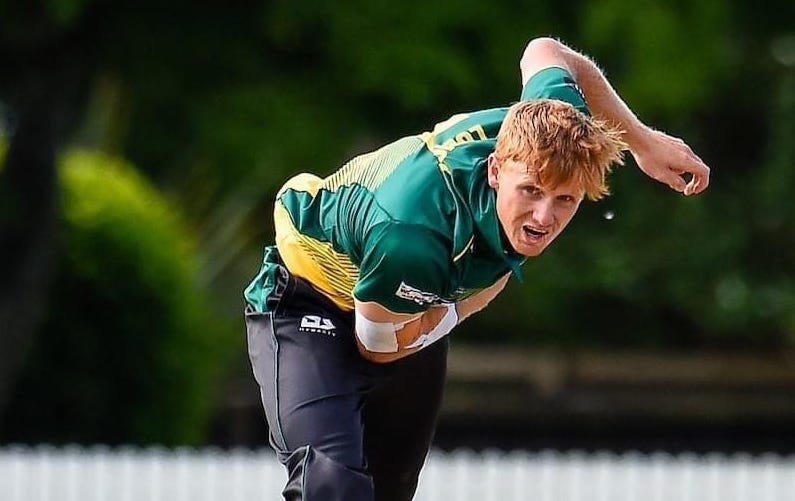
Fortunately, Ludick got a team fairly early in the draft, and a few weeks ago he landed in Houston to start his American cricket adventure.
In addition, his pursuit of higher education was another underlying factor to kick off a new escapade.
“My decision coming to the US is based on the endless opportunity. I feel the US brings in the form of Minor League and Major League.
"The US is the biggest sports market in the world and cricket has the potential to grow a lot over here!
"There is also the aspect of education opportunities that couldn’t be overlooked. I have been drafted by the Austin Athletics for the exhibition matches this season and my cricketing goals are to play at the highest level.”
From South Africa to New Zealand to the US, Ludick has demonstrated his ability to adjust well when encountering uncharted territory.
Even though he spent three and a half years in New Zealand and improved to a point where he’d be within striking distance of further honours, he was willing to make the sacrifice and start afresh in a country where cricket isn’t exactly mainstream.
But then again, he asserted that in a few years, the popularity of cricket in the US could reach new heights.
They’ve gained ODI status a little over a year ago, and they’re in the race to potentially earn a spot in the World Cup Qualifier.
Ludick has taken a couple of risks, but more importantly, they’re calculated and prudently thought out.
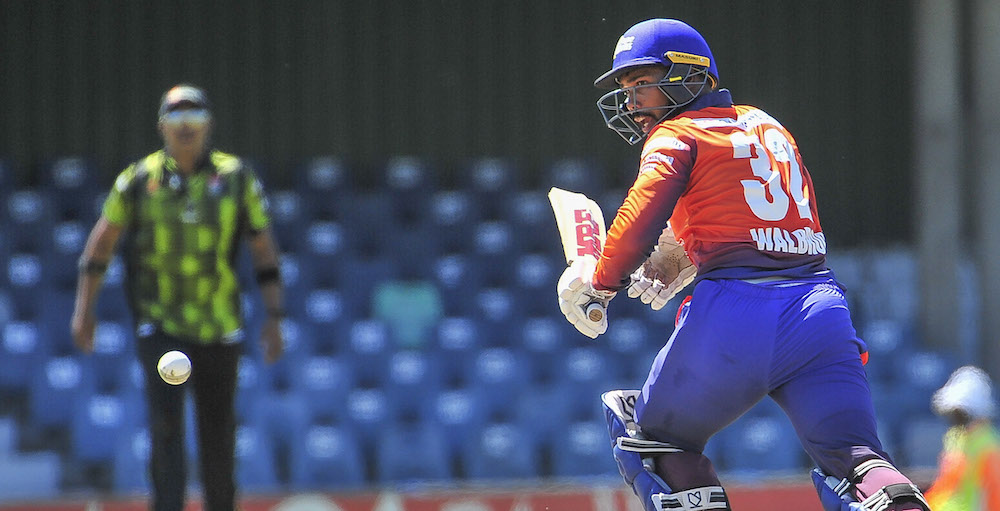
Off the Field: Tayo Walbrugh
By Nabeelah Fakier
Which cricket player did you look up to when you were younger?
When I was around 14-17 I was a big fan of Jonathan Trott, with him being a Rondebosch old boy as well, I looked up to him quite a lot.
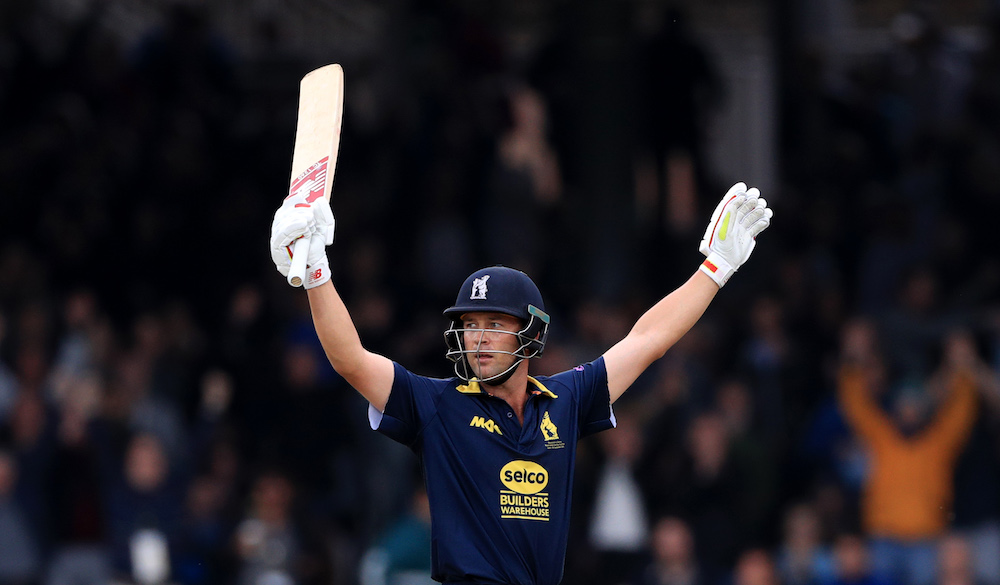
At which age did you first start playing cricket & where did you first start?
I started playing cricket around the age of 9/10 and the first club I was affiliated to was Edgemead cricket club.
What will you be working on for the upcoming season?
I think one of the things I am working hard on for this coming season has been my fitness and my mental approach, making sure that I can produce quality performances consistently for my team.
Who’s your favourite Indian, Australian & English cricket player?
Indian: Virat Kohli, Australian: Marnus Labuschagne, English: Jos Buttler/Joe Root.
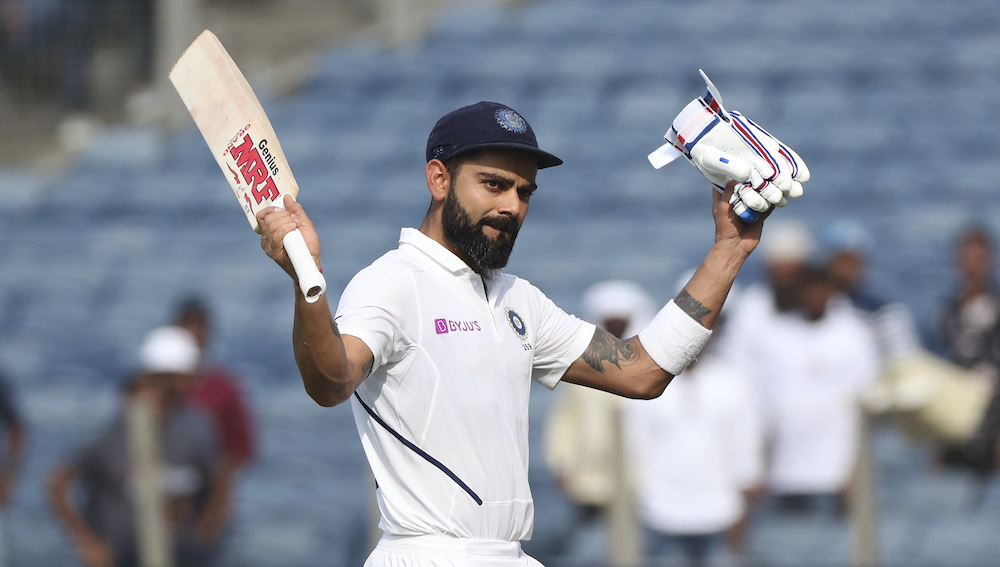
If you could be a character from any Netflix movie or show, who would you be & why?
Big fan of the series Lucifer, so yeah would probably be him.
What’s your favourite movie of all time?
Has to be Rush Hour 3, Chris Tucker is a legend!
You’re sent to an island and you can only take 3 things with you, what would it be?
My phone, a speaker for some tunes and a gas braai because I don’t trust my fire-making ability.
What’re your favourite things to do in Cape Town?
Lunch/dinner at the waterfront, night out in town, the occasional hike and beach mission as well as Blouberg sunsets now and then.
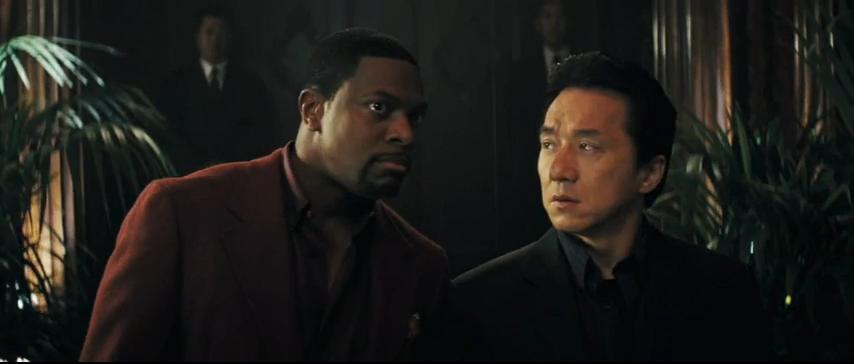
What was it like being called up to play for the Cobras?
It was an amazing experience, something that I’d been dreaming of since I was a little kid. To be honest the whole experience didn't set in until the season was done and then I had time to reflect on it.
Who’s your Premier League team?
I’m a Barcelona fan but I’m backing Chelsea in the Prem this season.
Which Avengers character would you say sums up your personality?
Tough one because I’m a big Avengers fan. I’ll have to go with Thor, including the Thor in Avengers Endgame, I love me a cheat day!
Do you play any other sports?
Used to love my hockey, played right through my schooling years even a couple of years after school as well. Unfortunately had to stop to play cricket in the UK during the winter.

Pineapple on Pizza, yes or no?
I mean I don’t usually have it on mine but I’m not totally against it either, there’s more than enough room for pineapple in the pizza world.
If you weren’t a cricket player, what would you be?
Over the last 3 years or so I’ve kind of taken a real interest to the fitness/YouTube industry. I’d love to create content and maybe start my own channel.
What did you study/Are you studying?
I’m not currently studying, I am planning on getting my Bachelor of Commerce in entrepreneurship through UNISA.

What do you usually do in your spare time?
Gym, running and I enjoy a Netflix/YouTube and chill.
What’s your pet peeve?
Not sure if this classifies as a pet peeve but I hate coming home to an empty fridge.
Which bowler would you love to hit for a 6?
A big inswinger from Mitchell Starc, flicked over mid-wicket, landing 20 rows back at the MCG.
Three things you never leave home without?
Car keys, wallet and phone.
What are your goals for your cricket career?
I want to play at the highest level. After getting a taste of franchise cricket I want more.
I'm hoping to establish myself in the franchise system over the next 2/3 seasons and then hopefully one day play for my country. As mainstream as it sounds, I guess that’s what we all want as players.
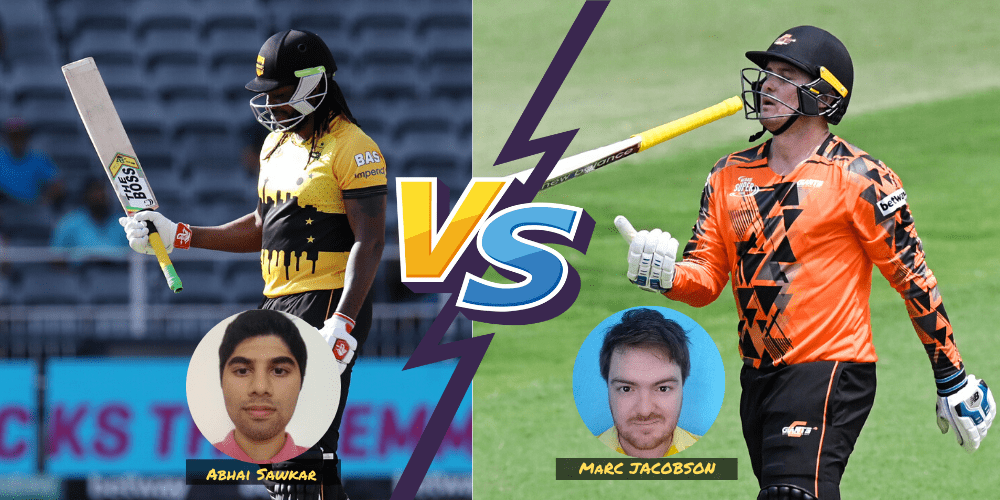
THE GREAT DEBATE: Should more overseas players be allowed to play in the Mzansi Super League?
ABHAI SAYS, YES
When we look at the success of T20 leagues, the first one that comes to mind is the IPL. The overall brand of cricket and the quality of players that feature have undoubtedly made it the brightest of events.
Now let’s take a look at the MSL – it’s still in the development phase when compared to more established leagues, but it’s headed in the right direction so far.
The MSL already features the best current South African players, both from the national setup as well as the domestic setup.
In recent times, the majority of limited-overs debutants have been products of MSL exploits, and not all of them have found the step up to be the smoothest of transitions.
There are two key factors for improving the quality of the MSL: providing opportunities to more young and developing players, and the recruitment of strong overseas players.
We haven’t seen too many quality overseas pros when analysing the 2018 and 2019 editions: the prominent names that stand out include Alex Hales, Eoin Morgan, Rashid Khan, Chris Gayle, and Jason Roy, to name a few.
Overseas players are the balancers for franchise teams and often are considered the big-match players. If we look at the IPL and the CPL, every playing XI has 4 overseas players, and the PSL has 3 overseas players in every XI.
There’s the argument that having too many overseas players in a playing XI could crowd out local talent from shining, but the MSL is set to upsize to eight franchise teams, and that means more uncapped domestic cricketers will potentially be able to play top-level T20 cricket for the first time.
Here’s another comparison: Australia’s Big Bash League. Every playing XI can feature a maximum of 2 overseas players, and in recent times, the quality of the league has downgraded due to the fact that the current local talent isn’t as proficient as the domestic players from earlier in the 2010s.
Playing three overseas players is a fair proposition: not too little, not too many. Plus there’s the option to sign more overseas players depending on availability.
The futuristic Bloemfontein-based team will have a sizable catchment area in the VKB Knights setup. In fact, relative to other franchise teams, only a few cricketers from the Knights have gone on to consistently play in the MSL.
The main objective of the MSL is to serve as an initiative for players in both the franchise as well as the semi-professional scene to step up to the plate and rise up the ranks.
With eight teams in the mix, it will be a mutualistic win-win situation – not only will the domestic players be able to learn from some of the best T20 cricketers, but the overseas players and top-level South Africans will be able to challenge the up-and-coming players from across the country.
MARC SAYS, NO
As much as T20s, and specifically domestic T20 tournaments, are a major drawcard for bashing international excellence from every corner of the globe, it remains paramount to still hone and focus on homegrown talent.
T20 leagues such as the Indian Premier League (India), Big Bash (Australia) and Caribbean Premier League (West Indies) – to name a few – have become moneymaking benders for pronounced players around the world.
These leagues have thrived under commercial gain for their respective national unions, to such an extent that they don’t any longer bare much significance to local talent or to the various regions where the teams are stationed.
Monetary values are attached to players and they are ‘sold off’ to teams as if they’re treasured items ‘up for grabs’.
Understandably, these leagues are great initiatives for advancing the sport in the shorter format, but what real substance do they serve besides enriching players’ bank accounts?
South Africa’s Mzansi Super League, still relatively in its infancy, and which comprises six teams, has a limit of two international players allocated per team – and it should stay that way.
While mixing international experience with local proficiencies can do wonders for developing talent, it should firmly remain within limits.
The allotted Proteas players are also in the mix to accompany the ‘no-name brands’, which should suffice in helping to unearth local flair as well.
The MSL is a good opportunity for aspiring players to make names for themselves, but without being too overshadowed by international quality.
A wide range of players already loses out on the opportunity to play as they fail to be snapped up in the bids, with the marquee individuals (national and international) at the forefront of being bought.
Provincially, SA have hundreds of semi-professional players in their stocks and too many lose out on these opportunities as is.
Adding another foreigner into the equation would further blanket local spark.
And although plans have been proposed of extending the MSL from six to eight teams, this can provide the perfect opportunity to reinforce the idea of prioritising domestic talent.
Two international players, plus several Proteas teammates, should strike the right balance of opening, at most, 10 positions for the best provincial talent per team. This would, in turn, restore the relevance of the tournament.
Disclaimer: Cricket Fanatics Magazine encourages freedom of speech and the expression of diverse views from fans. The views of this article published on cricketfanaticsmag.com are therefore the writer’s own and do not necessarily represent the views of the Cricket Fanatics Magazine team.
unlocked SERIES: Enoch Nkwe tells his story!
LEGENDS WITH RAVI: “Baboo vs Benaud’s Australians!”

“There's a Bright Future For Women's Cricket” – Nadine De Klerk
By Ongama Gcwabe
During the ninth episode of the On Lockdown Series, Nadine de Klerk spoke about Women’s cricket, her admiration for Marizanne Kapp and inspiring the next generation Women’s cricketers.
The Women’s T20I World Cup that was hosted by Australia a little over a month ago has been a testament to the growth of the Women’s game on a global scale.
Also, in South Africa, the Women’s game has been on the rise from a support point of view.
Credit must go to all the ladies who played for South Africa in those tough times because their efforts played a huge part in ensuring women’s cricket stays alive and healthy in SA.
“I spoke a lot to Mignon and them [the seniors], they say the youngsters coming in now are so privileged because when they started there was nothing, they played for fun”, said De Klerk.
“I remember when I went to the WC in 2017 and when we did so well and we came back, a lot of things happened for the Women’s game. I know there were a lot of improvements in contracts.
“I think it’s really heading in the right direction. The exposure that we’re getting, I think it’s still not there yet but there’s really a lot of improvements and I’m excited about the future.
“Hopefully as South Africans we can really fire that up.”
It’s really mind-blowing that Nadine is only 20-years-old and that she’s been in the 2017 WC squad.
She might be young and also a “very big romantic comedy fan”, but when it comes to the game, she has really serious cricketers as role models namely Marizanne Kapp and Jacques Kallis.
“She’s [Marizanne] a real competitor. I remember her face when she couldn’t play in the semi-final and my heart broke for her because I know how much of an impact player she is for South Africa”, said De Klerk.
“Even though she’s my own teammate, I really look up to her and I have a lot of respect for her. I think she’s leading from the front brilliantly and I would want to be like her.
“She’s also an all-rounder so obviously she’s the perfect example for me to follow.
“I’m a big Jacques Kallis fan. I almost cried when he retired, I’m a massive Jacques Kallis fan.”
There’s still a lot that needs to be done for Women’s cricket to be at a better level. As much as that is CSA’s responsibility, we as South Africans simply need to get more involved and support the ladies even more.
“There’s a lot of opportunities, there’s a bright future for women’s cricket, you can make a career out of it. Don’t think there’s not a chance, there’s no opportunity”, said De Klerk
“For me, it’s a dream come true. I love this game, I love playing for South Africa. Every time I put that jersey over my head I still get goosebumps every time, it never gets old. So, let that inspire you. It’s a brilliant game to play.”
For the full interview with Nadine de Klerk, click on the video below.
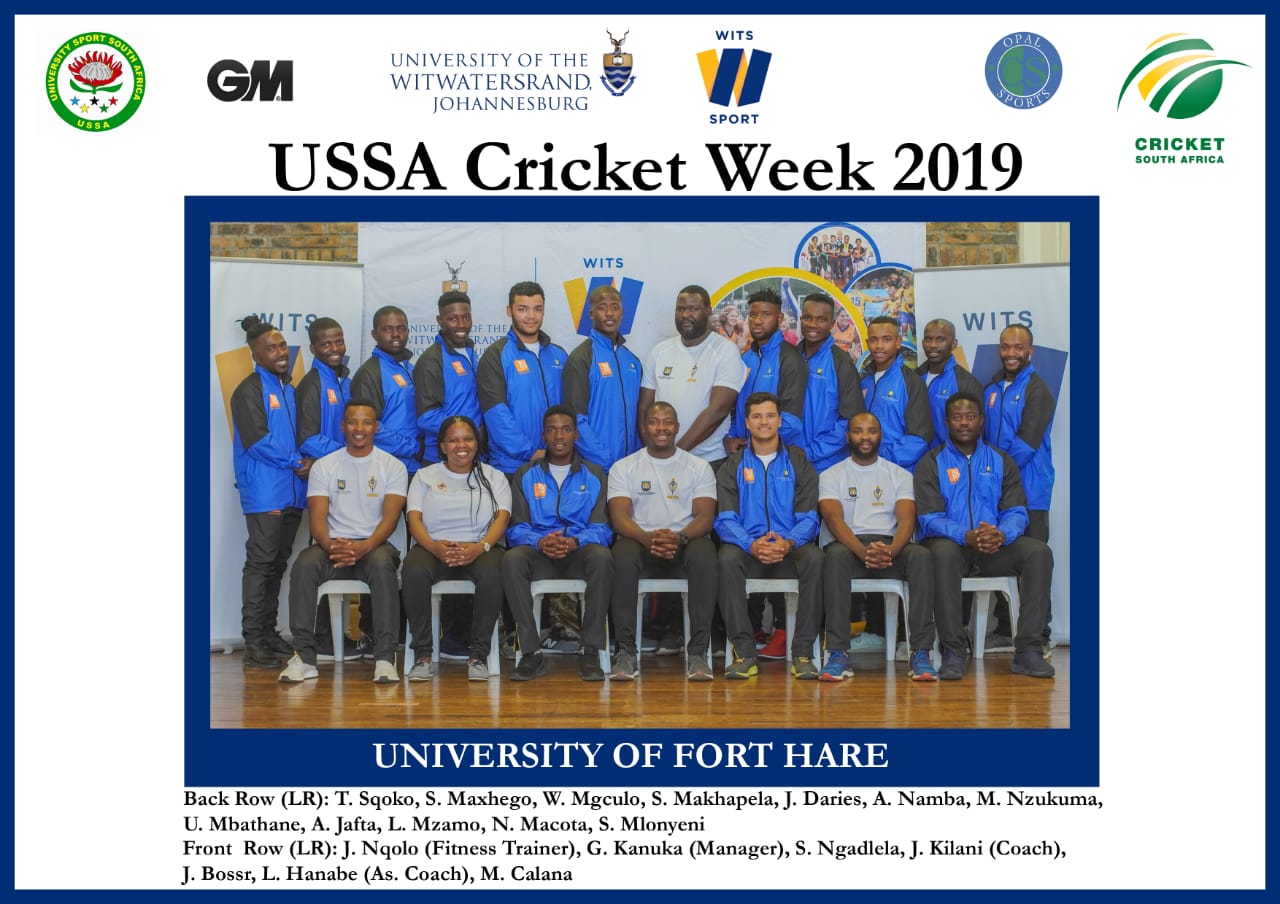
my involvement with the University of Fort Hare Cricket Team in Alice
By Snoni Mlenzana
“Sport has the power to change the world. It has the power to inspire. It has the power to unite people in a way that little else does. It speaks to youth in a language they understand. Sport can create hope where once there was only despair" - Nelson Mandela.
Being part of the Forties cricket team as a female scorer remains as one of the greatest memories of my University life. The history and the establishment of university cricket is quite an interesting process.
From being a group of guys who had a passion for the game and were hungry to play cricket, but weren't part of the well established CSA/UFH cricket academy, to a group of guys who made it work and started a cricket team that they all could fully be a part of.
We've heard about sport and uniting people, this is an exact example of that. The forties was established in 2008-09 era by a group of University of Forthare students.
At the time of inception, the team had no structure, no coach, no equipment, and no kit to speak of except for resources owned privately by the players themselves.
With one cricket bat and very limited support from the university, these group of students started playing cricket, taking turns to bat using that one “willow” which they all depended on.
Most people would have felt that it was a waste of time, and eventually would have given up, but not these lads, they were determined to make it work. The first group of players were called the "Kakkies" and they played in one of the lowest leagues in the Eastern Cape border region.
The name of the team was later changed to Forties resembling a group of young men who could hold the fort on behalf of the university whenever they battled any opposition on the cricket field.
The demands of university life and academic expectations which were a priority did not deter players from playing the sport that they all loved. With limited support, they defied the odds by making the most of whatever resources that were at their disposal.
In a predominantly Xhosa set up the team used the power of diversity to their advantage. “Kakkies” as they were known at that time boasted of many players from different backgrounds and other parts of Africa like Zimbabwe and Lesotho.
The diversity that existed amongst the players gave way to a team culture that had its foundations built on respect, tolerance, brotherhood, hard work and passion for the game amongst other elements.
I was fortunate enough to join the team as their scorer 2018 together with two other female scorers, this meant that my weekends were quite busy as I would have been obligated to attend every Forties match.
Eventually, Forties Cricket team became a haven for me, the team was family away from home, a group of brothers and sisters who were brought together by the beautiful game of cricket.
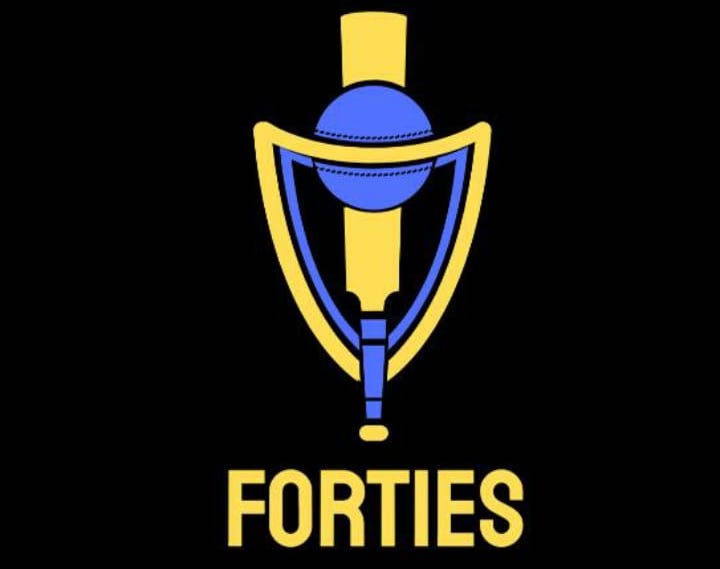
It was also gratifying to know that since 2015 the Forties managerial position was occupied by female student volunteers who had love for the game. This contributed to the empowerment of young female students who wanted to learn more about cricket and sport management in general.
As a team has had its fair bit of highs and lows over the years. The biggest highlight of the Forties history was being able to play in one of the country’s most prestigious university cricket tournament the USSA A week tourney.
In 2017 under the leadership of the head coach Mr Jongile “JJ” Kilani Forties played in the USSA A week tournament for the first time which was a huge achievement because they had been playing in the USSA B week section from the year 2012 up to 2016.
However, the experience of playing in a very competitive tournament also gave way to some negative and unforgettable moments on the pitch.
I remember how shattered we were as a team by the end of the USSA A Week tournament in 2018 as a result of our boys being bowled out for a poultry six runs against UFS, a piece of history that every Forties cricketer would want to forget.
It was quite a humiliating defeat, which made it into the South African cricket history books. Most players felt discouraged, some were even contemplating quitting cricket at some point. This is when they needed to reflect more on how far they had come, and giving up was not the solution.
The team’s culture and resilience were heavily tested. It was back to the drawing board for the team's administration and players. They worked extremely hard to bounce back from that disappointment.
We came into the 2019 USSA tournament with high spirits and displayed a brand cricket which showed growth and maturity from the players. They showed much more fight and determination.
Each year during national heritage holiday the Forties Cricket team including former players gets together at the University of Forthare main campus for the Forties annual reunion event.
In 2019 the Forties family celebrated a decade of Forties cricket, a successful event which allowed current and former players to reflect on the various experiences of the past decade while playing cricket for this great team.
The reunion also paved way for former players to come with various developmental initiatives that are meant to give the much need support to the team.
As we celebrated the Heritage holiday in the year 2020 it was sad to note that we cannot familiarly celebrate the annual reunion year due to the COVID 19 pandemic, so we'll celebrate by reminiscing the good old days through pictures and stories on different virtual platforms.
I would like to thank “Kakkies” lads and lasses that were involved in the formation of this amazing team. Forties youngins; coaches; ground staff; physiotherapists; managers; scorers and supporters, in making this team a successful one.
Secondly, everyone and every business that contributed and sponsored us with equipment, kits etc.
May you continue doing so, and may others be inspired to lend a hand too as we are still in dire need of assistance lastly, to coach “JJ”, who has "held the fort" for so many years, starting as a volunteer coach, I would like to appreciate you, Sir.
It must not have been easy taking charge at a young age with little support and little resources. The effort you have put into this team is tremendous and the results can be seen from our achievements as a team.
Magazine info
Editorial Director
Khalid Mohidin
IT, Technical Director, Systems Manager
Faizel Mohidin
Contributors
Abhai Sawkar
Khalid Mohidin
Marc Jacobson
Nabeelah Fakier
Ongama Gcwabe
Ravi Reddy
Snoni Mlenzana
Graphics
Khalid Mohidin (cover)
Mohammed Hoosain (logo)
Images
BackpagePix
Video Binge List:
On Lockdown Series
The Podcast Show
Legends with Ravi
